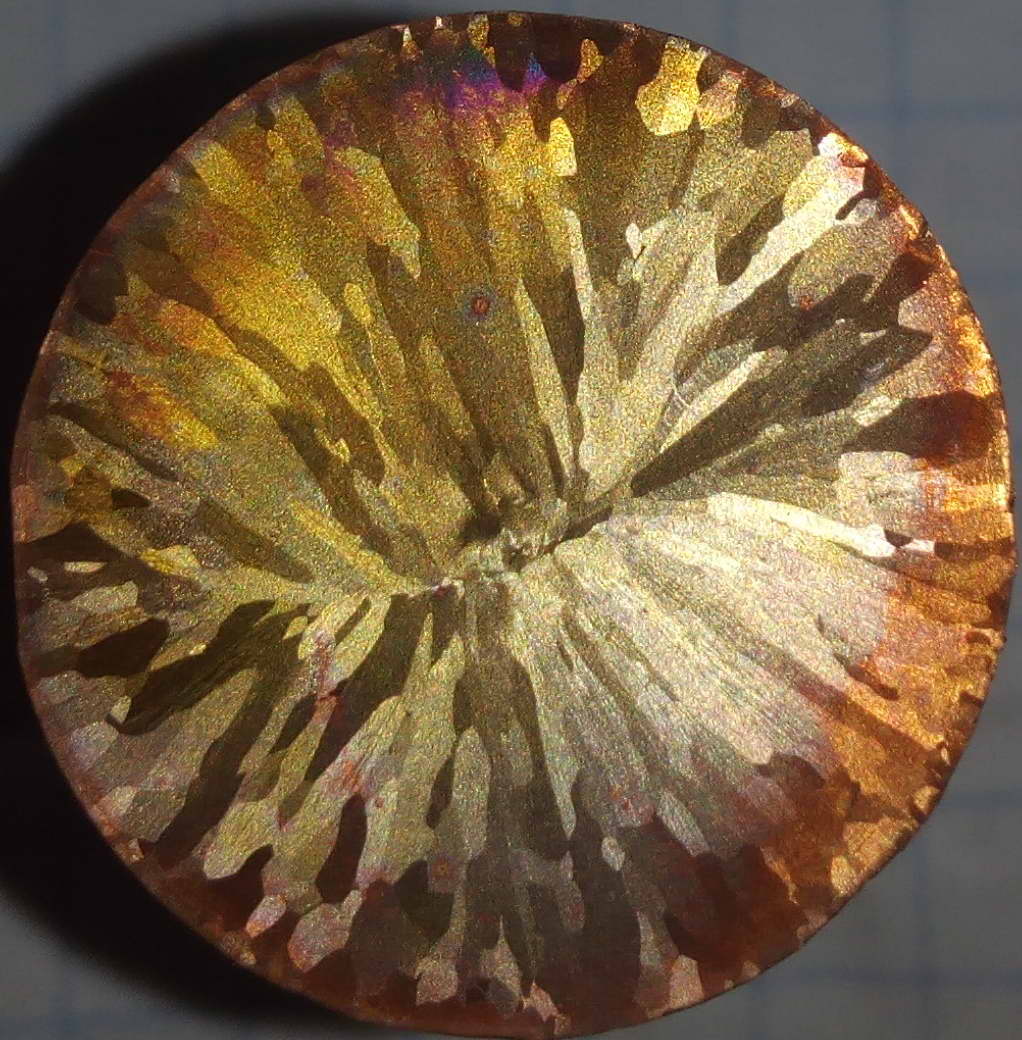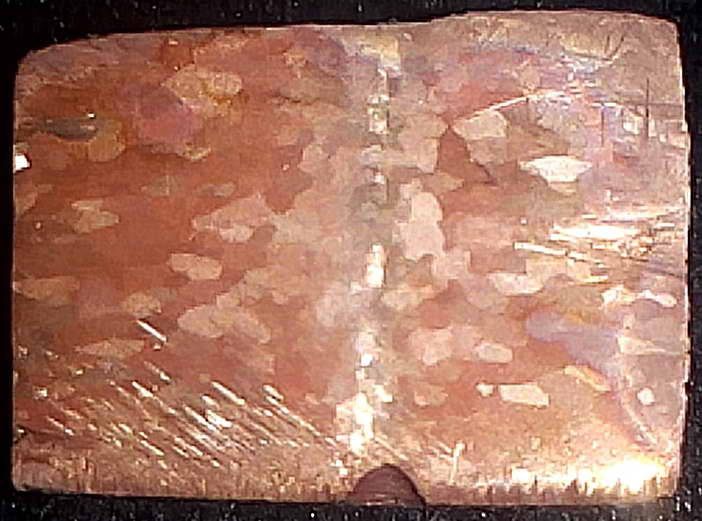Abstract
Content
Introduction
Currently, there is a tendency in the development of techniques and technologies of processing non-ferrous metals for the transition from discrete to continuous, and a combined casting and rolling processes. This can significantly improve plant productivity, product quality, provide substantial savings of expensive materials, to improve the technical and economic indicators. Continuity and combined processes in the world, producing 95% of the copper wire rod and only 5% by the method of rolling in section mills. With about half of the volume production of refined copper processed into wire rod or wire rod with a diameter of 8 to 20 mm for the subsequent production of wire, cable and other current conductors.
1.Relevance of the topic
An urgent task is to examine the distribution of grains in the structure in the continuous casting of copper and its crystallization. Just study the phenomenon of biased nucleation and an explanation of the mechanism of occurrence.
2.The purpose and objectives of the study
The aim is to improve methods of casting copper, as well as the development of new heat treatment technologies blanks.
The main objectives of the study:
3. The study of structure formation in the copper blanks
Samples of cast billets marks M1 copper diameter of 8, 12.5, 16 and 20 mm were investigated. In the course of the work using a biological microscope macro- and microstructure have been studied, and it was measured using the grain size. Microhardness grains of copper billets Hardness measured on a PMT-3 brand. Figures 1 and 2 show the macrostructure in transverse and longitudinal sectional diameter workpieces 8 (a), 12.5 (b), 16 (c), 20 (d), respectively.




Figure 1 - a cross-sectional microstructure of the billet diameter of 8 (а, ×4,5), 12,5 (б, ×3), 16 (в, ×2), 20 (г, ×1,5), mm
The above figures show that almost the whole structure composed of columnar grains, and only in the center of the samples contains fine grains. This indicates that the cooling of workpieces quickly carried away from the edges to the center, in which cooling is slowed.




Figure 2 - a longitudinal sectional microstructure of billets diameter 8 (a, ×4,5), 12.5 (b, ×3), 16 (с, ×2), 20 (d ×1.5) mm
A closer look you will notice that the displacement of the center of crystallization is observed in some samples. This is because the mold may have an uneven temperature. To determine the cause of grain distribution in the structure were measured grain sizes and their microhardness. Measurement results are shown in Table 1.
| The diameters of the workpiece, mm | Grain Size, mm | The microhardness, N / mm2 | ||||
| The scale of values | Average value | The scale of values | Average value | |||
| Length | Width | Length | Width | |||
| 8 | 0,3-0,5 | 0,2-0,4 | 0,4 | 0,3 | 628-598 | 613 |
| 12,5 | 0,7-1,05 | 0,2-0,35 | 0,88 | 0,28 | 644-598 | 621 |
| 16 | 1,0-1,3 | 0,4-0,8 | 1,15 | 0,6 | 613-584 | 598 |
| 20 | 2,1-3,1 | 0,5-0,7 | 2,6 | 0,6 | 598-570 | 584 |
Conclusion
Thus, it was investigated features of formation of structure in continuous-copper billets of different section, and found that with the increase in the diameter of the workpiece increases the size of the formed grains are those grains have a lower value of the microhardness. It has also been found to effect the crystallization of displacement of the center (Figure 2 c, d), due to uneven cooling of copper billet in the mold.
List of sources
- Суровый Э. П. Окисление наноразмерных пленок меди аммиаком/ Э. П. Суровый, Н. В. Борисова, С. П. Говорина, Л. Н. Бугерко// Вестник Кемеровского государственного университета: журнал. - Кемерово, 2008. - с. 54.
- Борисова Н. В. Закономерности изменения свойств пленок меди в процессе термообработки/ Н. В. Борисова, Э. П. Суровый, И. В. Титов// Вестник Кемеровского государственного университета: журнал. - Кемерово. 2008. - с. 54.
- Структурные и фазовые превращения/ [Пугачева Н. Б., Панкратов А. А., Фролова Н. Ю.]//Металлыы. - 2006.-#3 - с. 65-75
- Варлимонт Х. Мартенситные превращения в сплавах на основе меди, серебра и золота/ Х. Варлимонт, Л. Дилей. - М.: Наука, 1980. - 208 с.
- Пресняков А. А. Превращения в твердом состоянии, технологические свойства/ Пресняков А. А., Червякова В. В., Дуйсемалиев У. К. - М.: Металлургия, 1969. - 120 с.
